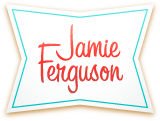The light at the end of the tunnel
The past month has been a bit too jam-packed for even a multi-tasker like me. The part of the company I work for was bought by another company, which was good because we ended up with two extra holidays this month (yay!), but not so good because it involved a lot of worry and stress…
